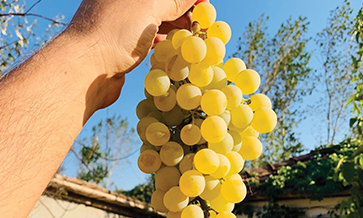Yeast is an incredible living micro-organism used in many different applications, ranging from healthcare to the food industry. Of course, it’s also an essential component in brewing, not only in the fermentation process, but also to achieve the right style of beer.
We’ve known for many years now that yeast has a crucial impact on the flavour profile and other sensory properties of beverages. It affects a wide range of characteristics – such as fruity and floral notes, phenolic or spicy character, the body of the beer and more.
It also interacts with other brewing ingredients and can either emphasise or subdue certain flavours, such as tropical or citrus hoppiness notes in beer.
At Fermentis, a Lesaffre business unit, the research team has been studying its yeast strains for several years. Let’s take a look at what they’ve been up to.
The original research at Fermentis, managed by its sensory analyst, Dr. Gabriela Montandon, was aimed at positioning different yeast strains in a single matrix, in order to compare their different profiles.
Tests of all Fermentis yeast strains were made in identical and basal conditions, and sensory analysis of each one gave a full overview of the range.
Flavour baseline
The product of this study was the Fermentis Yeast Flavour Baseline – an illustration of the range based on fruitiness, spiciness and neutral character provided by the yeast.
But this was only ever going to be the first step in a much more complex study. Yeasts are, in many ways, like human beings. They have personalities and characters. They behave and react differently in different conditions.
One single study of all yeast strains in the same conditions was never going to be enough to fully understand their complexity. Therefore, Fermentis has been working on a full characterisation of every yeast strain it has, trying each one in a variety of different conditions, and collecting the fermentation and sensory data from those trials.
In laboratory and pilot experiments, by changing the fermentation temperature, the original extract, the pitching rate, as well as the hop concentration and hop varieties, the R&D team has been collecting immense quantities of data about how one yeast strain can react in thousands of different conditions.
Screenings are made in order to identify which precise flavour and aroma components are generated in each different condition.
Tasting panels
Analyses of this data has helped Fermentis understand its own yeast strains in a hugely comprehensive manner – as much on the performance aspects (fermentation speed, degree of fermentation, sugar profiles, etc.) as on the sensory profiles (generated flavours and aromas in any condition).
This comprehensive research is being led in a scientific manner. Every year, two to three strains are characterised using the method explained previously. It’s an extremely time-consuming enterprise, but the results are definitely worth it.
In addition to the R&D team, Fermentis relies on a strong expert tasting panel. On a weekly basis, around 40 trained professionals are used to test the sensory aspects of all the beers created in the different conditions.
This is another reason why the research takes time, but it’s a key component to achieve the thorough and comprehensive results that Fermentis is striving for.
Of course, all this work done by Fermentis is aiming towards the same goal: helping brewers create the beers they want, and that we all love! And giving them the best possible information about how yeast behaves is crucial to achieving that.














